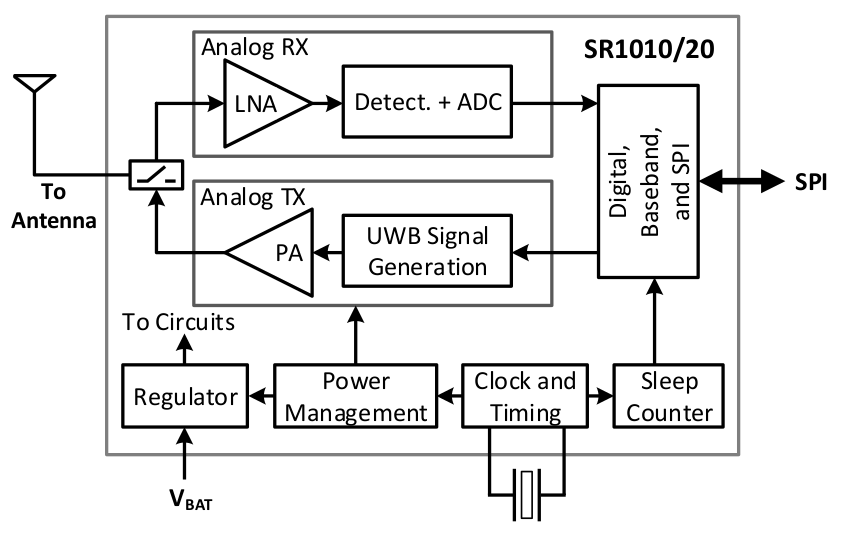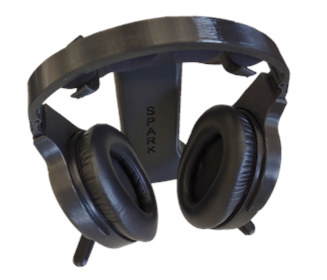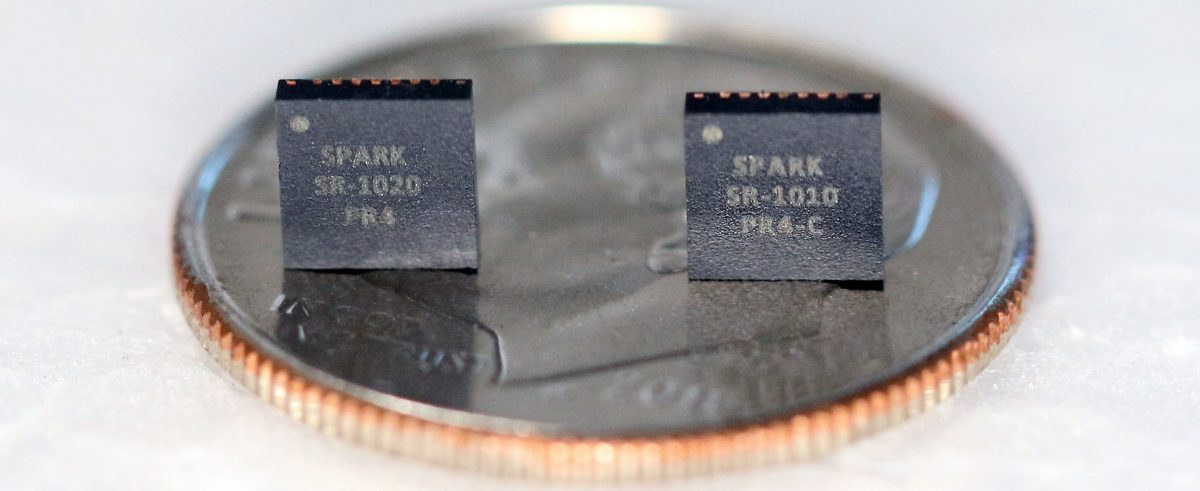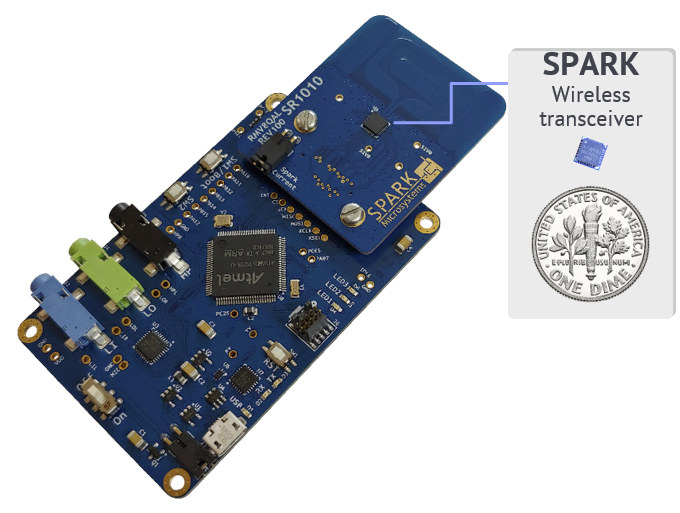Bluetooth is omnipresent in smartphones, headsets, smartwatches, and other devices thanks to its low-cost, low power consumption, and good interoperability between devices. But Montréal based SPARK Microsystems claims their SPARK UWB (Ultra-Wide Band) technology is vastly superior to Bluetooth with a data rate of up to 10 Mbps @ 1.5 nJ/bit, power consumption as low as 2 mW while transmitting and receiving at 1 Mbps, and going down to 6 μW at 1 kbps.
In other words, that’s up to 40x better energy efficiency, 60x lower latency, and 10x more data throughput as compared to BLE (Bluetooth LE) and without interfering in the 2.4 GHz band. Other highlights include lower wireless latency (50 µs for 1 kb), and time-of-flight (ToF) positioning at 30 cm accuracy for a line-of-sight range of up to 100 meters.
The company has launched the SPARK SR1000 family with two models: the SR1010 operating in the 3.1 to 6 GHz band, and the SR1020 in the 6 to 9.25 GHz band.
The chips include The SR1010/SR1020 an UWB RF transmitter and receiver, a power management unit, a sleep counter, digital baseband hardware, timers, and a regulator. They can be controlled by the host MCU over an SPI interface.

The SR1000 family of chips is suitable for real-time data streams thanks to the ultra-short latency communication, systems operating with a coin-cell battery or batteryless through energy harvesting, and the company claims the solution is low-cost thanks to “high-efficiency PCB antenna reference designs” and a low BoM cost. Devicetodevice, star, and mesh networks are supported.
The SPARK SR1000 evaluation kits enable interested parties to evaluate low-latency audio streams with a demo using 5 ms latency, uncompressed 48 kSps 16-bit stereo. The devkits can also report wireless link quality statistics, power and latency monitoring, be used as a time-of-flight positioning demonstrator, and for battery-less sensor nodes.
 There’s also a gaming headset demo kit that looks like a reference design, and is said to offer 3 times the battery life of other low-latency headsets, and without audio quality degradation thanks to the use of uncompressed audio.
There’s also a gaming headset demo kit that looks like a reference design, and is said to offer 3 times the battery life of other low-latency headsets, and without audio quality degradation thanks to the use of uncompressed audio.
Applications that can leverage SPARK UWB technology go far beyond audio and gaming however, with the company envisioning use cases for the smart home, IoT, virtual reality, home security, oil & gas, retail, medical, and other sectors.
More details can be found on the company’s website, as well as an interview (in French Canadian) and an article on Radio Canada.
Thanks to Simon for the tip.

Jean-Luc started CNX Software in 2010 as a part-time endeavor, before quitting his job as a software engineering manager, and starting to write daily news, and reviews full time later in 2011.
Support CNX Software! Donate via cryptocurrencies, become a Patron on Patreon, or purchase goods on Amazon or Aliexpress







What’s the range when it’s _not_ line of sight?
If you read their product sheet, it depends on the bandwidth, the higher the bandwidth, the shorter the range.
50 meter range at 5.5Mbps isn’t half bad compared to Bluetooth, but unless this becomes a widely adopter standard, it’ll never replace Bluetooth.
I can guarantee you it will never become an adopted standard. Still don’t understand why these companies are even trying it. Get into the IEEE or Bluetooth SIG and contribute your points to the standard.
Probably they didn’t figure that standards are first and foremost a matter of lobbying and pleasing every participant’s ego and have nothing to do with technical excellence at all.
I’m sorry I haven’t tipped you about this before, I was quite certain I already saw an article about it over here.
“In other words, that’s up to 40x better energy efficiency, 60x lower latency, and 10x more data throughput as compared to BLE (Bluetooth LE) and without interfering in the 2.4 GHz band”? Holy cow!!!